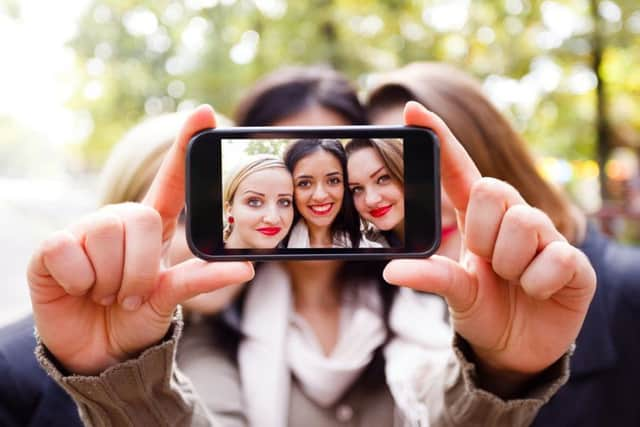Choosing your best social profile pic? Ask a stranger


With more of our lives spent online from getting a job to seeking romance, having the right profile picture may be critical as first impressions really do count.
For the first time psychologists have investigated the process by which people choose their profile pictures and how to avoid a social media faux pas.
Advertisement
Hide AdAdvertisement
Hide AdAnd strikingly it showed people select more flattering profile images when selecting pictures for other people compared with when selecting for themselves.
Lead author Postdoctoral Research Fellow Dr David White, of the University of New South Wales in Australia, said: “Key events in our professional, social, and romantic lives unfold on the Internet.
“Approximately one-third of employers search online for information on job candidates, half of British adults that are currently searching for a relationship have used online dating, and 1.79 billion people world-wide have an active Facebook account.
“As a result, we are continually forming first impressions of unfamiliar people in professional, romantic, and social contexts via social networking sites.
Advertisement
Hide AdAdvertisement
Hide Ad“Pictures that are chosen to represent us in these online environments - ‘profile images’ - establish a critical link between an individual’s online and offline personas
“Our findings suggest that people make poor choices when selecting flattering images of themselves for online profile pictures, which affects other people’s perception of them.
“This effect is likely to have a substantial impact on online interactions, the impressions people form and the decisions they base on them, including whether to employ, date, befriend or even vote for someone.
“Previous work has shown that people make inferences about an individual’s character and personality within a split second of seeing a photograph of their face, so our results have clear practical implications; if you want to put your best face forward, it makes sense to ask someone else to choose your picture.”
Advertisement
Hide AdAdvertisement
Hide AdThe study explored whether selecting one’s own profile picture might have a positive or negative effect on first impressions.
It asked 102 students to select two out of 12 photos of their own face that they were most or least likely to use as a profile picture in three online network contexts: social networks, dating sites and professional networks.
They were then asked to do the same for 12 images of a randomly selected stranger who had participated in the study previously.
People tended to select images that highlighted positive personality traits in line with the context of the website that the image was for.
Advertisement
Hide AdAdvertisement
Hide AdDr White said: “Our results demonstrate that people know how to select profile pictures that fit specific networking contexts and make positive impressions on strangers: dating images appear more attractive, and professional images appear more competent.”
However, when the researchers showed these images to strangers they had recruited via the internet and asked them to rate how attractive, trustworthy, dominant, confident or competent the person in them appeared, they found that the images people had selected for themselves made a less favourable impression than images selected by others.
Dr White added: “Future research needs to investigate the mechanisms that underlie the choices people make when selecting profile pictures to find out why people seem to have a limited ability to select the most flattering images of themselves.”
The study was published in the journal Cognitive Research: Principles and Implications.